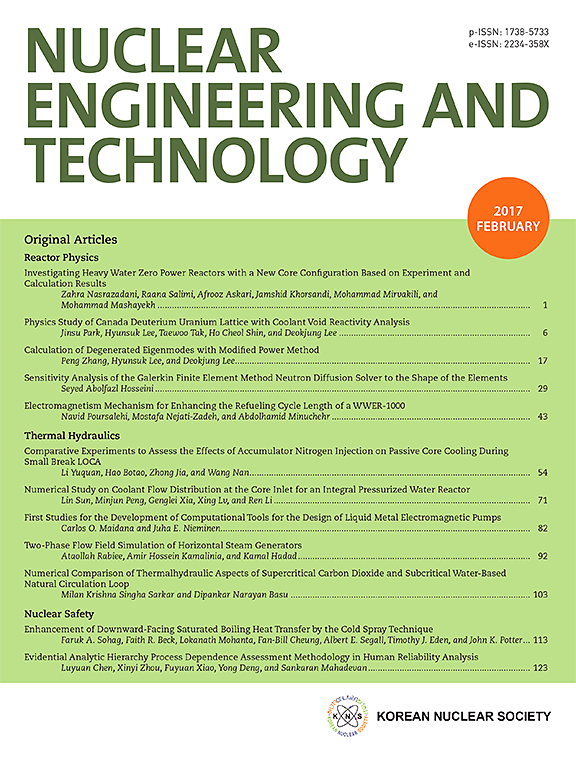探索技术材料中的氦保留:开发与研究
IF 2.6
3区 工程技术
Q1 NUCLEAR SCIENCE & TECHNOLOGY
引用次数: 0
摘要
用于研究核聚变的材料会保留大气中的氦,除非在实验前进行预处理。了解氦放气对于核聚变实验的准确诊断非常重要。氦气的存在通常被认为是发生核反应的主要证据,因此在进行新的核实验之前,必须减少已知的氦气来源。此外,在将实验中的等分气体转移到质谱仪时,也有必要确保密封性。在这篇文章中,我们介绍了对新型核实验所用系统中氦泄漏率的研究。我们还介绍了在不同加热曲线和大气浓度条件下材料中氦气保留情况的研究。在没有预处理的情况下,12 英寸长的直径为 3/8 英寸的管子和直径为 1/2 英寸的 316 不锈钢管的平均放气量为 0.64 pmol/cm。如果预处理不可行,则可根据定制实验设备所需的管子长度来调整结果。它还可以及时从大气中重新吸收 He。这些研究还表明,在进行以 He 的存在作为新型核反应指标的实验之前,有必要对大多数材料进行预处理。本文章由计算机程序翻译,如有差异,请以英文原文为准。
Exploring helium retention from technical materials: Development and investigation
Materials used to study nuclear fusion can retain atmospheric helium unless pretreated before an experiment. Understanding helium outgassing is important for accurate diagnostics in experiments surrounding nuclear fusion. The presence of helium is often cited as the primary evidence that a nuclear reaction has occurred, so it is imperative that known sources of helium are mitigated prior to proceeding with novel nuclear experiments. It is also necessary to ensure hermeticity when transferring gas aliquots from an experiment to a mass spectrometer. In this article, we present studies of helium leak rates in systems used in novel nuclear experiments. We also present studies of helium retention in materials subjected to various heating profiles and atmospheric concentrations. Without pretreatment, 12-inch lengths of both 3/8” diameter tubes and 1/2″ diameter stainless-steel 316 tubing yielded an average areal outgassing amount of 0.64 pmol/cm. If pretreatment is impractical, then the results may be scaled based on the tubing length necessary for constructing custom experimental equipment. It also may reabsorb He from the atmosphere in time. These studies also demonstrate that it is necessary to pretreat most materials prior to performing experiments where the presence of He is being used as an indicator for novel nuclear reactions.
求助全文
通过发布文献求助,成功后即可免费获取论文全文。
去求助
来源期刊

Nuclear Engineering and Technology
工程技术-核科学技术
CiteScore
4.80
自引率
7.40%
发文量
431
审稿时长
3.5 months
期刊介绍:
Nuclear Engineering and Technology (NET), an international journal of the Korean Nuclear Society (KNS), publishes peer-reviewed papers on original research, ideas and developments in all areas of the field of nuclear science and technology. NET bimonthly publishes original articles, reviews, and technical notes. The journal is listed in the Science Citation Index Expanded (SCIE) of Thomson Reuters.
NET covers all fields for peaceful utilization of nuclear energy and radiation as follows:
1) Reactor Physics
2) Thermal Hydraulics
3) Nuclear Safety
4) Nuclear I&C
5) Nuclear Physics, Fusion, and Laser Technology
6) Nuclear Fuel Cycle and Radioactive Waste Management
7) Nuclear Fuel and Reactor Materials
8) Radiation Application
9) Radiation Protection
10) Nuclear Structural Analysis and Plant Management & Maintenance
11) Nuclear Policy, Economics, and Human Resource Development
 求助内容:
求助内容: 应助结果提醒方式:
应助结果提醒方式:


